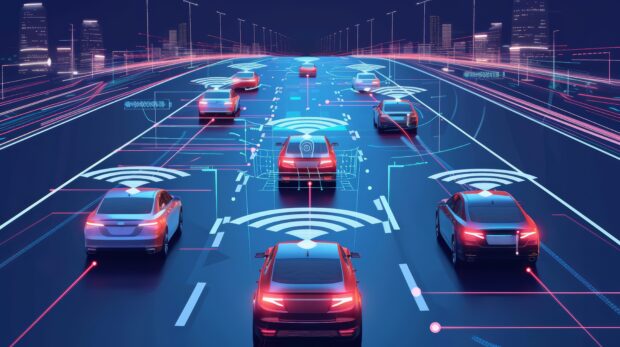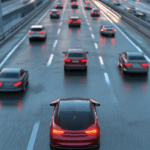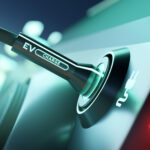Self-driving cars could make personal auto insurance largely obsolete within 20 years, according to a worst-case scenario modeled by Morningstar. A more likely, moderate scenario forecasts the line could remain necessary for a few more decades, until 2060.
The firm’s new report, “Insuring Autonomy: Analyzing the Implications of Self-Driving Cars for the Auto Insurance Industry,” finds that by 2044, in the most aggressive adoption scenario, most cars on the road could be automated to a level where liability shifts from driver to manufacturer. Morningstar believes that wide adoption of autonomous vehicles likely means that car insurance would be replaced by product liability insurance, which would ultimately be borne by the auto manufacturers when Level 4 or 5 autonomy is achieved.
This transition could be the end of the line for insurers that rely too heavily on personal auto premiums, Morningstar warned, highlighting Progressive as potentially being at risk.
The Timeline
Morningstar said the most important factors that will affect AV penetration rates are the timeline of technological development, pace of AV technology adoption and scrappage rate of the existing car fleet. The firm then developed three scenarios for each of these factors: very aggressive (the worst-case scenario for personal auto insurers), aggressive and moderate (the most likely scenario).
Morningstar noted that most vehicles currently in the market are at Level 2-3 automation, with driver assistance or navigation on autopilot (NOA) systems like Tesla’s FSD Supervised or XPeng’s XNGP. These systems can autonomously brake, accelerate, stop, steer, overtake, and change lanes in a complex urban or highway environment, but they still require continuous input from a human driver. There are some Level 4 solutions from companies like Waymo, Cruise, Apollo and Pony.ai, which offer robotaxis capable of driving without a human behind the wheel, but rides are currently limited to certain geographical locations where the software is trained extensively on location-specific parameters.
The study defines the timeline for technology development as the point at which 0.25 percent of the vehicles sold have Level 4 or higher autonomous capability. Morningstar calculated that in a very aggressive scenario for technological development, a 0.25 percent adoption rate could be reached in early 2026. That breakpoint would push back to mid-2027 for the aggressive scenario and 2029 in the moderate scenario.
Using previous technologies as a guide, Morningstar calculates that Level 4 or 5 AV technology could reach an 80 percent adoption rate in as little as seven years (14 years with an aggressive scenario and 18 years with a moderate scenario).
For scrappage rates, the firm took historical data as a baseline, with the very aggressive and aggressive scenarios assuming the rate at which old cars are replaced will increase materially over time.
Using these calculations, Morningstar projects that under its very aggressive, aggressive and moderate scenarios, 60 percent of the cars on the road will be Level 4 autonomous or higher by 2044, 2053 and 2060, respectively.
Impact on Insurance
Morningstar assumes that the personal auto line won’t be affected significantly until Level 4 or higher autonomy is achieved at scale, when liability can be transferred from the driver to the auto manufacturer or the company that provided autonomous capability to the vehicle. This is because even in Level 3 autonomy, humans will have to take control in many conditions and can be held responsible in the case of an accident.
AVs are expected to begin having a material impact on auto insurance once a penetration rate of 10 percent is achieved (2035 in the very aggressive scenario). The business will decline at an increasing pace as the penetration rate increases from 10 percent to 60 percent (in 2043), at which point it stops creating any value and the capital on insurance balance sheets will start to be returned to shareholders.
Morningstar examined the prospects of Travelers, Allstate and Progressive if the personal auto line becomes obsolete.
Travelers is expected to see only a small impact from the loss of personal auto—a 4 percent decline using the explicit method and a 6 percent decline using the formula-based approach. About 60 percent of Travelers’ premiums come from commercial insurance, and the personal lines operations are split roughly evenly between auto and homeowners, with personal auto representing only about 20 percent of overall premiums. Additionally, while Morningstar believes that Travelers does have a narrow moat stemming from its commercial operations, its auto business doesn’t seem to have one. With returns on this side limited and premiums relatively low as a part of the overall mix, the potential obsolescence of the personal auto line doesn’t appear to be a major issue for Travelers.
For Allstate, while auto constitutes the bulk of its premiums, it is also a significant player in homeowners. Morningstar believes it is reasonable to think Allstate would continue to operate even if it exited personal auto. Although Allstate derives the majority of its premiums from auto insurance, Morningstar estimates a relatively modest decline in value using its explicit (15 percent) and formula-based (13 percent) approaches, since Allstate is not believed to have a moat. In the Stage 2 projections, ROE holds at about 10 percent, and the company exits personal auto before any major value destruction. (See Morningstar’s definition of economic moat below.)
Morningstar said the outlook is much more grim for Progressive, which is largely concentrated in personal auto. Its homeowners line was acquired in 2015 and constitutes only 4 percent of total premiums, so that line will probably be lost as well if the insurer exits auto insurance. While Progressive has a commercial auto business that represents 17 percent of premiums and is very profitable, Morningstar’s worst-case scenario predicts that this line will also become obsolete.
Progressive is expected to see a much more sizable valuation impact, with a 26 percent decline in value using the explicit method and a 21 percent decline using the formula-based approach. Since Progressive produces very strong returns on personal auto, its narrow moat is a negative, as much more value is lost through obsolescence.
By the end of Stage 2, in the worst-case scenario, Morningstar expects the insurer to completely shut down its operations.
***
Economic Moat
The Morningstar Economic Moat Rating is a structural feature that Morningstar believes positions a firm to earn durable excess profits over a long period of time, with excess profits defined as returns on invested capital above our estimate of a firm’s cost of capital. The economic moat rating is not an indicator of the investment performance of the investment highlighted in this report.
Narrow-moat companies are those that Morningstar believes are more likely than not to achieve normalized excess returns for at least the next 10 years. Wide-moat companies are those that Morningstar believes will earn excess returns for 10 years, with excess returns more likely than not to remain for at least 20 years. Firms without a moat, including those that have a substantial threat of value destruction-related risks related to environmental, social, and governance; industry disruption; financial health; or other idiosyncratic issues, are more susceptible to competition.
Morningstar has identified five sources of economic moats: intangible assets, switching costs, network effect, cost advantage, and efficient scale.





















 Unpacking a Consumer Intervenor’s Novel Idea
Unpacking a Consumer Intervenor’s Novel Idea  The Hardest Part of Innovation in Insurance Isn’t Technology; It’s Culture
The Hardest Part of Innovation in Insurance Isn’t Technology; It’s Culture  Examining 5 Key Factors Fueling MGA Growth—and Emerging Challenges Ahead
Examining 5 Key Factors Fueling MGA Growth—and Emerging Challenges Ahead  Why Insurance Telematics Integrations Fail
Why Insurance Telematics Integrations Fail 

